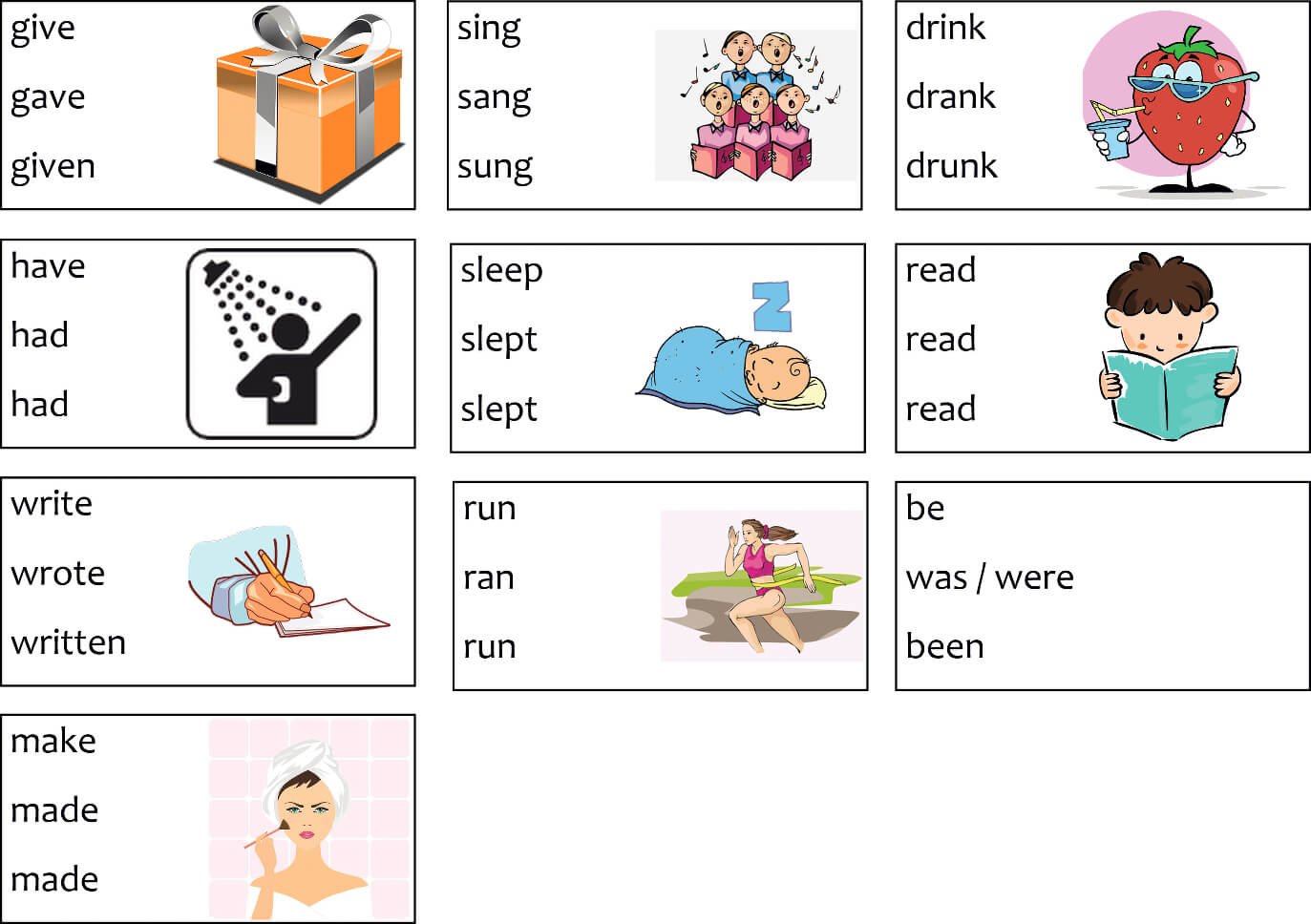Present simple tense for elementary students
Present simple is one of the most important tenses in English. It is quite easy to teach and learn but it must be done properly. In this post I am going to teach some vocabulary first and then teach the forms using the verbs.
ADVERT:
[showmyads]
In this post you can find a worksheet, a video and an interactive quiz to teach the vocabulary for daily activities. Once your students know the verbs it is time to introduce the forms – present simple tense affirmative, present simple tense negative and present simple tense questions.
Daily activities

If you need the pronunciation, you should try the following video. In the second part of the video there is a quiz to practise the words. There appear the words and you have about 3 seconds to say the word before you hear it.
Daily activities – worksheets
If you would like to play the quiz on the full screen, click the following button.
Daily activities – quiz
There are four more activities in a print form. Print out the following worksheets and solve them:
Daily routine_worksheet
When the students know the vocabulary, I believe it is time to introduce the grammar.
Daily activities – song
You could just play the song to the students or you could ask them to listen and complete the lyrics
I wake up in the morning
Present simple tense – grammar
ADVERT:
[showmyadsa]

The infographic contains a lot of details. If you think it would be too much for your students, feel free to cut it into parts and present the different forms at different times.
Present simple tense – stories
Here, there are two more stories to highlight the grammar.
The first story explains why people use the ending -s in third person singular.
In English there is the sound PSST which is used to draw someone’s attention. A long long time ago people did not gossip. But then they started to speak about someone else but no one listened. But those people who gossiped needed attention so they started to use the PSST sound. They said:
Nikola (use students’ names, it is more fun and people listen) cook PSST very badly.
Adam play PSST football. Jane like PSST English. And so on.
And as people spoke quicker and quicker they soon reduced the PSST sound to the ending -s. So ever since when we speak about 1 person who is not me or you, we use the ending -s.
The other story explains the usage of DON’T.
Do you know what sound do bells make in English. DING DONG! It is very important because I will tell you a story that happened in the year 756. On 15th June suddenly three bells fell from a church tower in the English town Epston and they became alive. Suddenly they had legs and they walked around the country. And they spoke. People came to them and they asked them. “Do you live here?” “We,” started the bells but suddenly the sound DONG came from inside, “DONG live here.”
“Do you like music?” people asked.
“We DONG like music?”
“Do you do any work?”
“We DONG work.”
People spoke about these bells everywhere. “They dong like music.” “They dong work.” And as the time passed they changed the DONG sound to don’t and ever since we use DON’T in negative sentences. Later people added the form DOESN’T in third person singular.
And what happened to the bells? As they could not do anything they put them back on the tower and they never became alive again.
Present simple tense – grammar practice
The first quiz is a game calleed On Target. Your aim is to choose the correct answer and then shoot as many bad ducks as possible. You can shoot a bottle on the side too and win a bonus. The game is in flash and it plays on desktops only.
To play the game on the full screen, click the button below.
Present simple tense – On TargetThe second quiz is in HTML5 and thus it will play everywhere.
To play the game on the full screen, click the button below.
Present simple tense – QUIZPresent simple tense – Communicative activities
Remember the worksheets have to be your own.







thank you so much for your free gift
hello and welcome
It’s nice for all English student
It’s cool! Thanks a lot.
very good for me and another
thankful
thank you, that’s an interesting way to teach the students .
thanks that was great
Hello,
I am an English teacher and I really appreciate what you created and that you shared it with everyone.
God bless you.
Thank you!